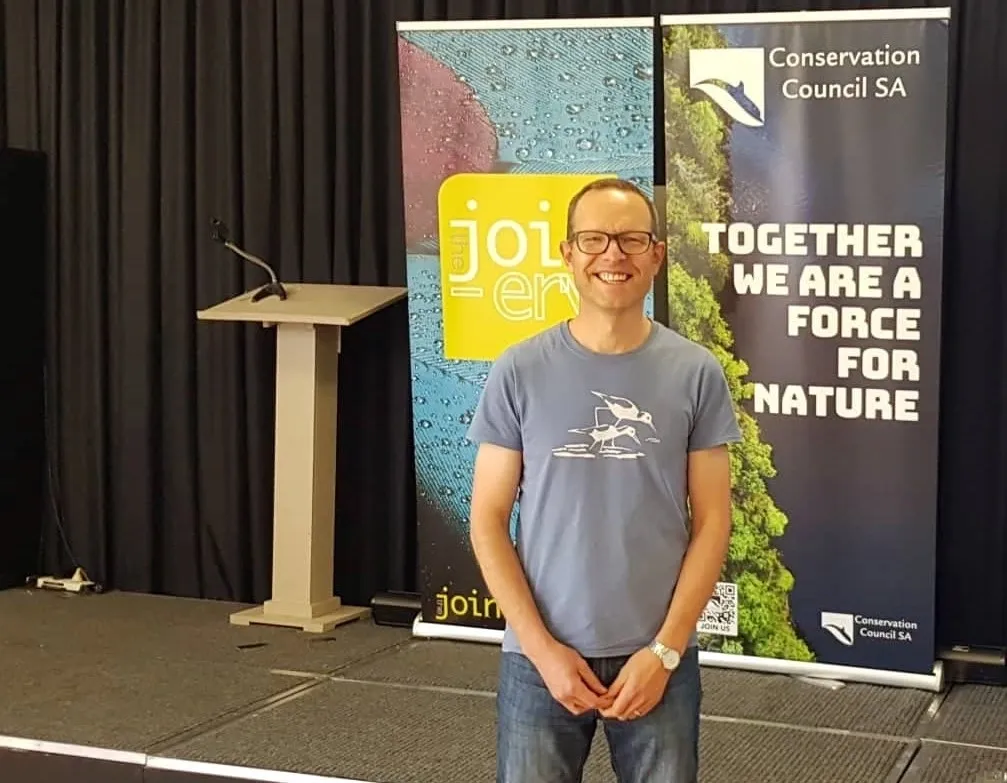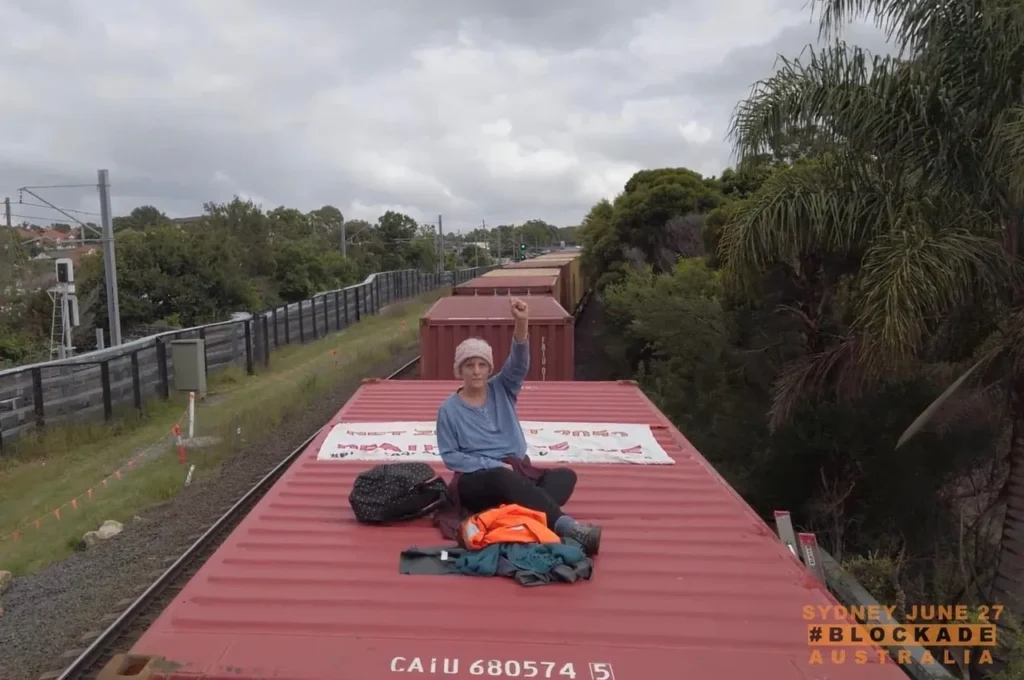
YOUR WEEKLY DEEP READ…The voters of South Australia resoundingly kicked out a first-term Liberal State Government last weekend because they were not prepared to accept a sub-standard public health system. Jackie Pearson spoke with the SA Conservation Council and SACOSS about the role of environmental and social justice in the state campaign. This week we focus on the SA Conservation Council. Part two of this SA election roundup will be published next Saturday.
Craig Wilkins, CEO of the South Australian Conservation Council, refers to the state’s position as an alternative energy leader as a “miracle” but believes that status may be one of the reasons that environmental justice did not emerge as a strong state election issue this time.
“We are a mix of luck, opportunity and good decision making. We were very heavily coal-dependent, but our coal was starting to run out at the same time new technology, particularly wind, was starting to emerge,” Wilkins said.
In 15 years South Australia transformed what would usually take 50 years to achieve, according to Wilkins, who is embarking on making a documentary about the move to renewables in South Australia.
“We overtook Denmark to have highest share of renewables in the world.”
According to Wilkins it all started when Howard and Costello were negotiating South Australia’s share of GST revenue with Meg Lees. She requested “something like $450 for renewable energy” and then Prime Minister John Howard said yes. His Treasurer Peter Costello had expected she means around half a million dollars but had to honour the PM’s promise when he realized she’d requested $450 million.
“South Australia just happened to have a lovely combination of lots of wind, close to the grid with a lovely chain of power lines close to power stations that were about to close down so South Australia grabbed a whole chunk of funding,” Craig Wilkins said.
“A whole lot of pioneers had mapped the wind profile 30 years before anybody else did; Mark Rann came in as premier; we got a whole lot of wind farms and then some advances in solar and then Mark Rann wanted to do a household solar fitting scheme,” he said.
Rann initially proposed five years for minimum growth of small-scale solar but lobbying by renewable energy players resulted in the five-year scheme being changed into a 20 year scheme.
“Solar prices plummeted and the payback (time to break even on investment in solar panels) came in at three to four years so the scheme went gangbusters.”
Wilkins sees South Australia’s complete independence from coal as an example of how governments cannot create real change if they stick to “business as usual”.
“If governments want to invest in transformation, they need to invest in big steps but most feel like they can’t intervene in the market. It is when governments go “no, we actually want to change the dynamics of the market”. Everyone goes crazy for a while but then they catch up.
“We suddenly had companies like Tesla and others who came. Then we had the moment of the blackout, and the government had a real fork in the road moment. They could have gone back to gas but rolled out within six to nine months a whole suite of shifts, including the battery.
South Australia’s Hornsdale Power Reserve was built in 2017 via an agreement with Tesla, Neon and the former SA Government. Prime Minister Scott Morrison referred to it as a “Hollywood” solution, akin to the Big Banana or Giant Prawn.
The SA Conservation Council calls the building of the Hornsdale Power Reserve “great work done by the bureaucracy, supported by the community, with really healthy bipartisan support. When the Liberal Government was elected in 2018 there was no “night of the long knives”.
“They said basically this has worked really well, made a few changes and invested in the interconnector.”
Craig Wilkins believes the complete absence of any debate about renewable energy, climate or the environment, during the Marshall v Malinauskas 2022 state campaign may be due to the feeling that the job had been done.
“There would hardly be a small or medium business in SA that doesn’t have solar on its roof because it is a business no brainer.
“So a big part of the work is done but our fastest growing share of emissions, and our largest share, is transport and that is growing because we have woeful transport, few incentives for Electric Vehicles… so the logical next step is to integrate our high level of renewable energy by rapidly electrifying transport, having batteries driving around city, plugging in, plugging out, because an EV battery is five times as big as domestic battery, so we would not have to have any burning backup at all, we would have a truly smart electric system.
“It is accepted that is a possible pathway but there is no urgency about that. It feels like now that we have been a leader for such a long time, we are happy now to be a fast follower, that is the language I have heard such a lot from the Department of Transport,” Wilkins said.
The SA Conservation Council’s core groups were surprised and disappointed that environment and climate did not play a larger part in the 2022 campaign.
“We have been really surprised by that, especially at this point in time when you’ve got a nightly parade of environmental impacts that are really affecting our health system, our economy, whether it is fires, floods or pandemics. Last week it was Japanese encephalitis.
“The next four years is essentially half the time the international science community has said we’ve got before the climate falls of a cliff and we reach the point of no return so to have a state election campaign where such existential crises are not seen as a discussion point for the community is really surprising.”
Australian Conservation Foundation polling shows climate change becoming increasingly important for voters and Wilkins acknowledges that, coming out of the COVID pandemic, policies on cost of living, jobs and the economy dominated the campaign.
“There are good people from all parties that I am confident that will champion conservation in the new government,” he said.
However, he says “collective denial” is another explanation for the absence of climate and nature from the state campaign.
“Some people are able and willing to draw the dots and see the picture, others join the dots and see the picture and run a mile and others don’t even go there.”
Four years from now?
UBC Professor of Climate Justice and acclaimed author and journalist, Naomi Klein, describes the future as “radical”. We are either facing disruptive radical changes to our physical world in the form of natural disasters and climate extremes or we face the need to make radical changes to our society to prevent those changes from taking place.
The current state of play is not an option, according to Klein and Craig Wilkins agrees.
“The two inexorable factors which will change the conversation are we will start getting more and more immediate feedback loops which will mean more people will start paying attention. Climate will also receive prioritisation from a new generation – those who have not grown up in a time when things were year on year getting better,” he said.
Smart money, he says, is already shifting away from fossil fuels and other climate crisis contributors towards sustainability.
“The major areas of focus for us were definitely transport because even four years ago, we did not emphasise transport nearly as much as now.
“We also focused on funding for the environment for nature protection because both the previous Labor Government and the Marshall Liberal Government have failed to invest in nature protection and in fact the core funding has gone significantly backwards.
“The budget for visitor and tourist interaction has increased but not for nature.”
Keeping gas in the ground is another priority for the South Australian Conservation Council.
“While SA is a genuine world leader in renewable energy we also have a huge amount of focus on gas exploration and production including a big push to extend into the Simpson desert.
“If you look at the gas industry, they have for many years published maps of their future gas pipelines. They’ve got this grand dream of linking up the nation, from Moomba across desert and then up north.
“There would be three or four significant potential new fresh basins if they can get the gas out.”
The SA Conservation Council is concerned about the traditional close connections between Labor and the gas industry.
“It was the Liberal party who put a moratorium on fracking in the state’s South East.
“If you look around the country at gas and fracking, it is not Labor versus Liberal but incumbent versus opposition and it comes down to access and lobbying.
“What operates in Australia is not so much overt corruption that you see in other countries. Instead it is more a mates exchange. So people who tend to go to the same private schools, go to the same universities, they know each other (we are so peer mediated), interact and it is a game of mates.”
Those voters who were switched on to nature and climate in the leadup to the South Australian state election may have realized that the Marshall Government didn’t even respond to the Conservation Council’s survey on nature and climate.
“The reality is we asked all the parties who are currently represented,” Wilkins said.
Labor, the Greens and SA Best responded. The Liberals sent a list of their achievements but no commitments.
“It was near impossible for us to assess what a Liberal Government would do in the next four years. It was the opposite to four years ago when Marshall delivered on the Simpson Desert National Park.
“They would not have done that, I am 100 per cent sure they would not have delivered, if they hadn’t signed in blood before that they would do it and, to their credit, they have held firm.
“It was a really good example of how seeking commitments during campaigns is a narrow opportunity of how sectors who have less power can get to make changes via commitments.
“Money and power do over time get more and more of a foothold into the governing party but when they are in opposition, that is the time to seek commitments.”
Federal campaign
The SA Conservation Council won’t play such a big part in the federal campaign.
The seat of Boothby is hyper-marginal and the only one in SA that is so Wilkins says they have the ability to focus a lot of attention on that one seat.
He said he finds the Morrison Government’s attitude to the role of national environmental laws “deeply concerning”.
“I am on the Places You Love steering committee nationally and we are strongly against EPBC Act changes.
“We had lots of conversations with Rex Patrick and we have been really pleased the Senate has so far stopped most of the immediate changes and insisted the government has so far done the right thing.”
What can you do?
1. Visit the SA Conservation Council to find out more about their work. Their HQ in the heart of Adelaide is a place worth visiting with its community garden.
Next week we will publish our interview with the head of the South Australian Council of Social Services to examine the role social justice issues played in the campaign.


